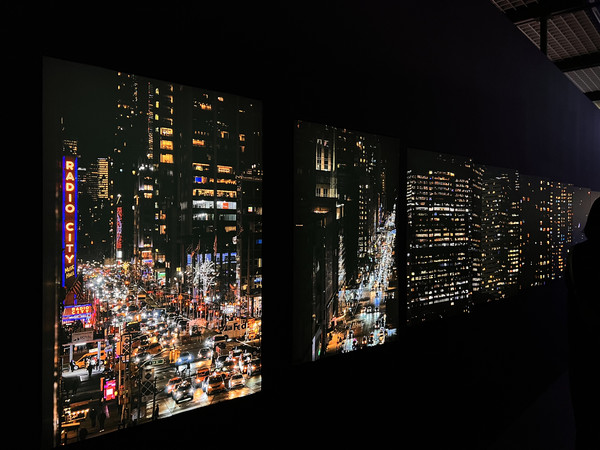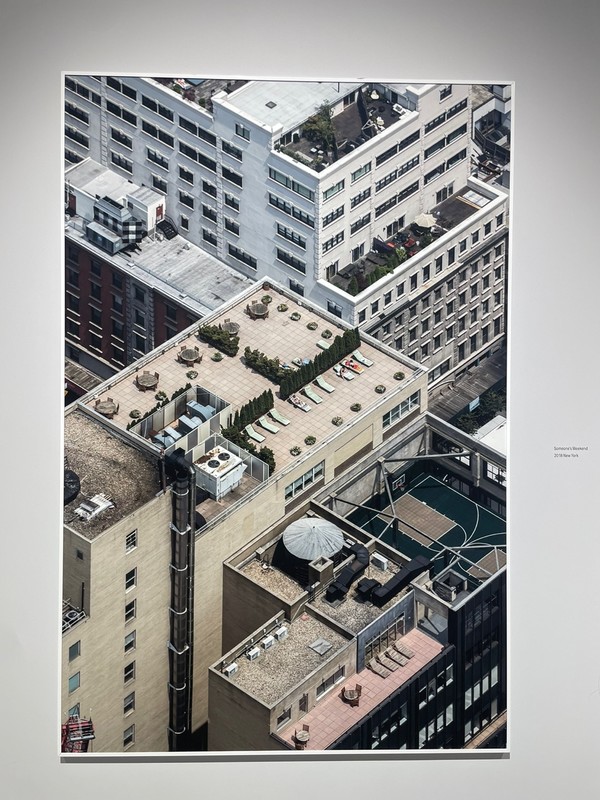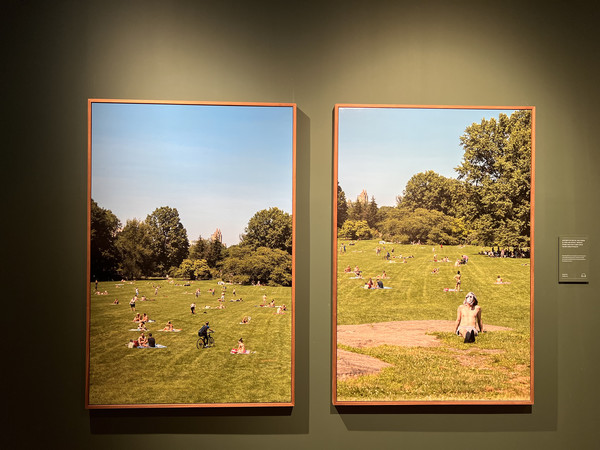A review of Lee Kyung-jun’s *One Step Away*
THE QUOTIDIAN is often taken for granted. Lee Kyung-jun’s photo exhibition, One Step Away, turns this notion around and showcases the extraordinariness of the ordinary. The exhibition explores the city views of New York and Seoul captured from a step away. From the bustling city to the verdant peacefulness of the forests, the exhibition provides visitors with a moment to appreciate the beauty of ordinary things. Despite the focal setting being New York, which may be unfamiliar to many audiences in Seoul, the sentiments of magic shining through the mundane remain. This reveals that the extraordinary is not an inherent quality of a time or place, but simply a matter of perspective.
The city through Lee’s lens
Lee Kyung-jun, a New York-based photographer, embarked on his photographic journey in 2013 while working as a physiotherapist[1]. He describes himself as a city observer and captures the city view from a distance. By doing so, he captures the beauty underlying familiar views by chance.
Spontaneous moments of buildings during the golden hour greet the audience. The sunset shines on the concrete buildings and extends its rays to the entire exhibition room. The backdrop lighting behind the displayed photos enhances the vividness of New York City’s landscape. In the photographs themselves, Lee effectively uses various light sources: from a sunset’s ephemeral reflections on glass buildings to the sun glittering on a river stream and nighttime building illumination. While the appreciation of something seemingly mundane—as is the interplay of lighting—can only be temporary, the photographs enable their boundless admiration.


Although the exhibition mainly revolves around New York City, the audience occasionally encounters familiar views of Seoul. Lee captures the distinctive differences between the cities’ identities through their simple characteristics. New York is a city where many different people coexist; its diverse neighborhoods blending harmoniously into the city attests to a pluralistic spirit. Lee intensifies the idea of the melting pot of the city using the reflection of the light on buildings. The shape and color of the light shift with the passage of time and seasons to create different views, emphasizing the unique atmospheres of each neighborhood[1].

On the other hand, Lee visualizes the rhythmic lifestyle of Seoul by capturing the geometric shapes of its buildings. In contrast to New York City’s eclectic nature, the well-organized patterns of Seoul’s buildings and roads reveal consistency. The identical square shapes of Seoul’s buildings can create a feeling of tediousness. However, Lee’s unique approach creates art from such monotone features by embracing the aesthetics of the repetitive geometry in his photographs, hence enlightening the viewers of a yet unperceived underlying value. In a similar fashion, han-gul[2] road signs appear unfamiliar and aesthetically appealing through the photographer’s lens, even though it is extracted from nothing but the quotidian. Lee alienates familiar matters and instigates the audience to appreciate their ephemeral value.
Distinctive features
Most of the pieces are untitled or the titles simply indicate the region where the photos were taken with no additional remarks. By minimizing the use of words to reach the audience, Lee prompts them to develop their own perceptions of the works. Such tendency to communicate by showing instead of telling actively engages viewers to independently contemplate the extraordinariness each moment holds.
Bird’s eye shots are One Step Away’s one of the most prevalent photographic angles. Such a stylistic choice stems from Lee’s attempts to understand New York City. He recalls that by observing the city from a rooftop, he was easily able to grasp a seemingly unattainable city. New York City is often connoted as a bustling place that never sleeps. However, bird’s eye shots of lovers conversing atop a rooftop challenge this stereotype and encourage the audience to experience the city’s intimate moments.


The exhibition is occasionally interactive. The “Central Park” chapter captures hidden moments of the city where residents find solace as they unwind amidst the greenery, sunbathe, and interact with one another. The green benches placed in this chapter invite the audience to accompany New York’s residents in their relaxation. Additionally, in the last chapter “Playback,” the audience can articulate their everyday concerns in writing and destroy it through a paper shredder. Such engaging activity helps the audience view their worries in simple ways as they write them down, which ultimately creates a sense of tranquility and peace of mind.
Another distinctive feature is Lee’s perception of the city. In Lee’s view, a city functions as a single constitution wherein its components interact with one another, adhering to the rules set by people[1]. Accordingly, his works reveal how concrete buildings, tranquil parks, and rooftops reverberate in unison. For example, numerous works feature Central Park, a place conceived as “The Lungs of the City[3].” Photographs reveal urban dwellers in commune with nature and fellow citizens, as they escape from the stress of life amidst a concrete jungle[4].
The significance of the exhibition
Despite the seemingly small space we occupy in stirring cities, the photographs highlight that we have the power to make big changes by establishing new perspectives in the way we approach our lives. The photographs taken from “one step away” help the audience expand their perspective to recognize that beauty can be found in any moment, across time and space. “Simplicity is the ultimate sophistication,” notes Lee, establishing his unique identity as a photographer[5]. What empowers Lee’s exhibition is his ability to perceive the magic in simplicity. He focuses on the most ordinary views that people take for granted and converts them into extraordinary artworks. In a fast-paced society, the exhibition One Step Away revitalizes mundane, concrete constructions into a timeless and refreshing experience.
The message Lee conveys via his works is particularly relevant to today’s society, where art has become greatly available to a large group of people. Following the increase in popularity of exhibitions among Generation Z in South Korea, visiting art exhibitions and taking selfies in front of impressive artworks have become a common practice[6]. According to a survey conducted by Daehaknaeil, 89.6% of 537 individuals in their twenties visited at least one exhibition within a year, and 89.6% of them had taken photos at the exhibition, 61.3% of them being for the sake of social media[6]. This recent trend challenges the former norm of exhibitions. It used to be a niche hobby, usually associated with the upper class. However, as art becomes socially more accessible, exhibitions in general become inclusive and engaging. In this sense, the exhibition One Step Away thoroughly embraces inclusivity by addressing the matters that are commonly shared among people. Although arts for mere show on social media is arguably problematic, it serves to encourage various arts and cultural activities. Through this, the exhibition may inspire and touch people by chance and allows an opportunity to appreciate art regardless of the intended purpose, which truly enriches our lives. Despite how large groups of people taking photos fill Lee’s exhibition room, it is still significant how the exhibition actively invites the audience to relish the arts.
Period: 2023.10.27–2024.3.31
Entry Hours: 10:00-19:00, closed every first Monday
Admission Fee: ₩15,000
Address: 14, Sejongdae-ro, Jung-gu, Seoul
[1] Ground Seesaw
[2] Han-gul: Korean alphabets
[3] The Gotham Center for New York City History
[4] Central Park Conservancy
[5] Leonardo da Vinci
[6] K-ARTNOW

